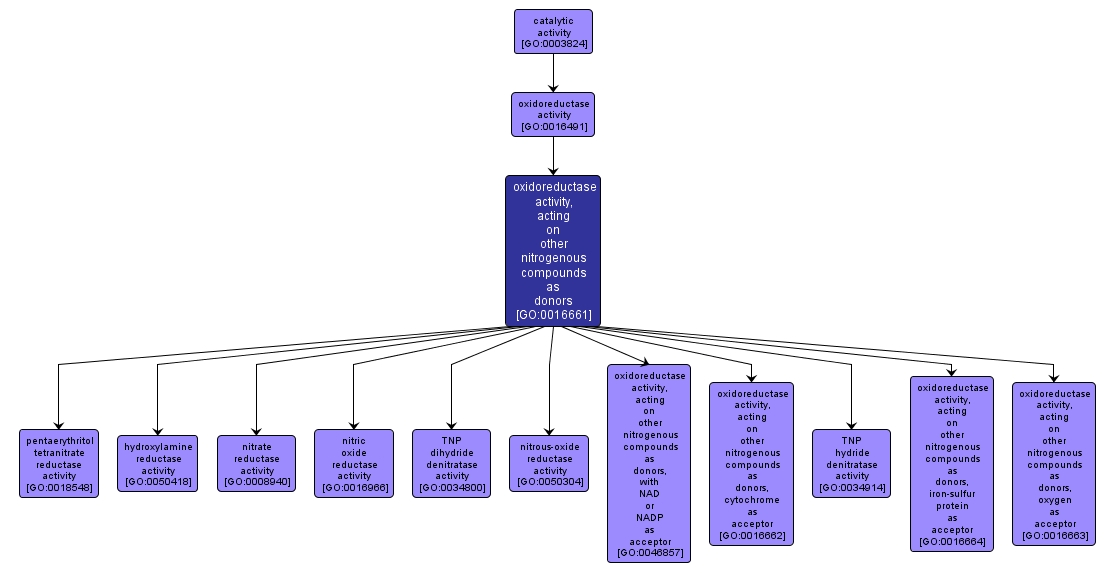GO TERM SUMMARY
|
| Name: |
oxidoreductase activity, acting on other nitrogenous compounds as donors |
| Acc: |
GO:0016661 |
| Aspect: |
Molecular Function |
| Desc: |
Catalysis of an oxidation-reduction (redox) reaction in which a nitrogenous group, excluding NH and NH2 groups, acts as a hydrogen or electron donor and reduces a hydrogen or electron acceptor. |
Synonyms:
- oxidoreductase activity, acting on other nitrogenous compounds as donors, other acceptors
|
|

|
INTERACTIVE GO GRAPH
|














